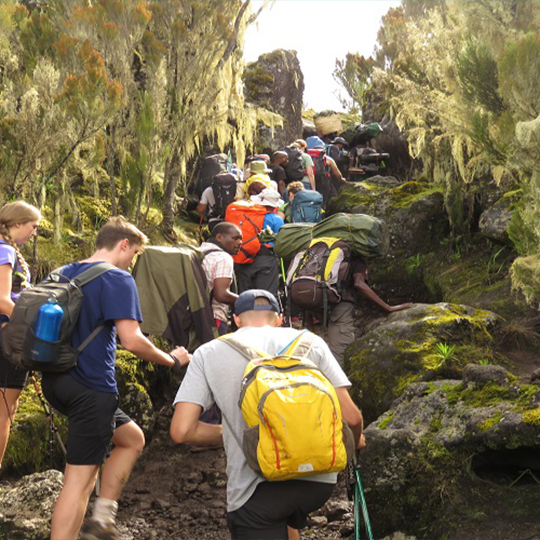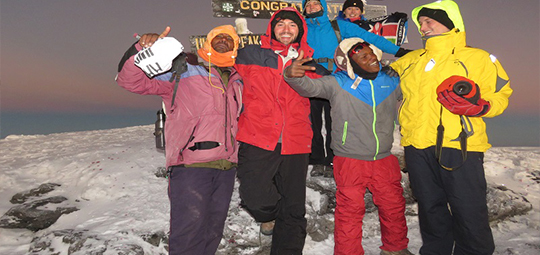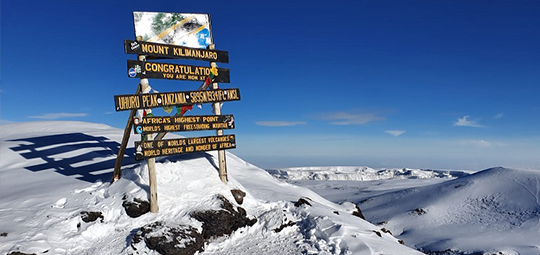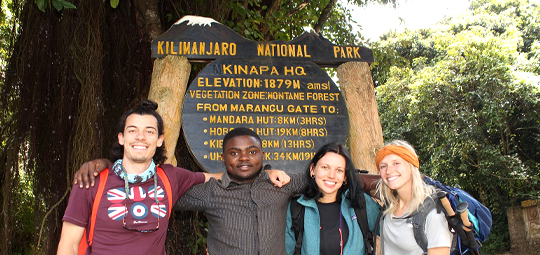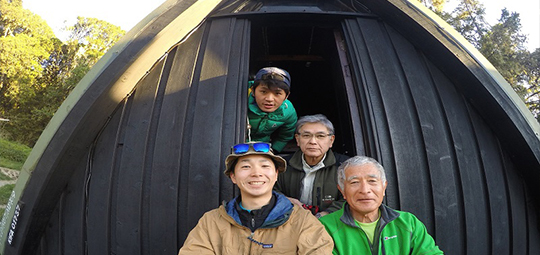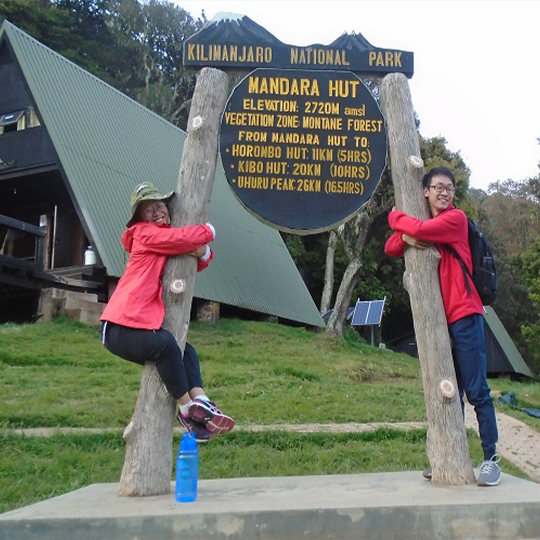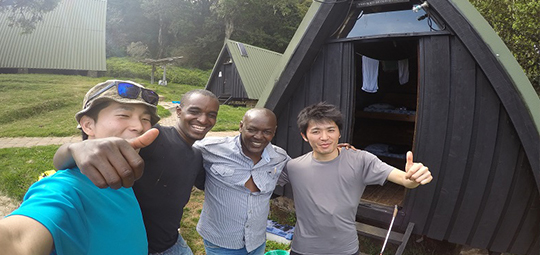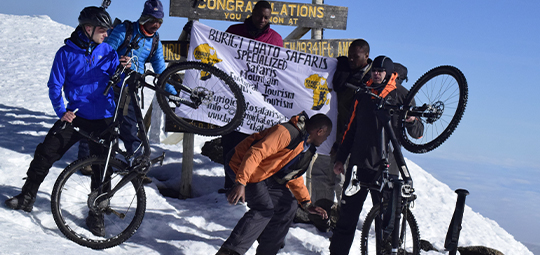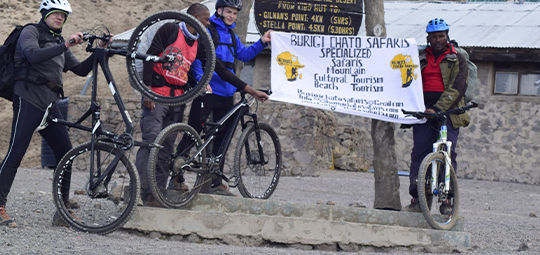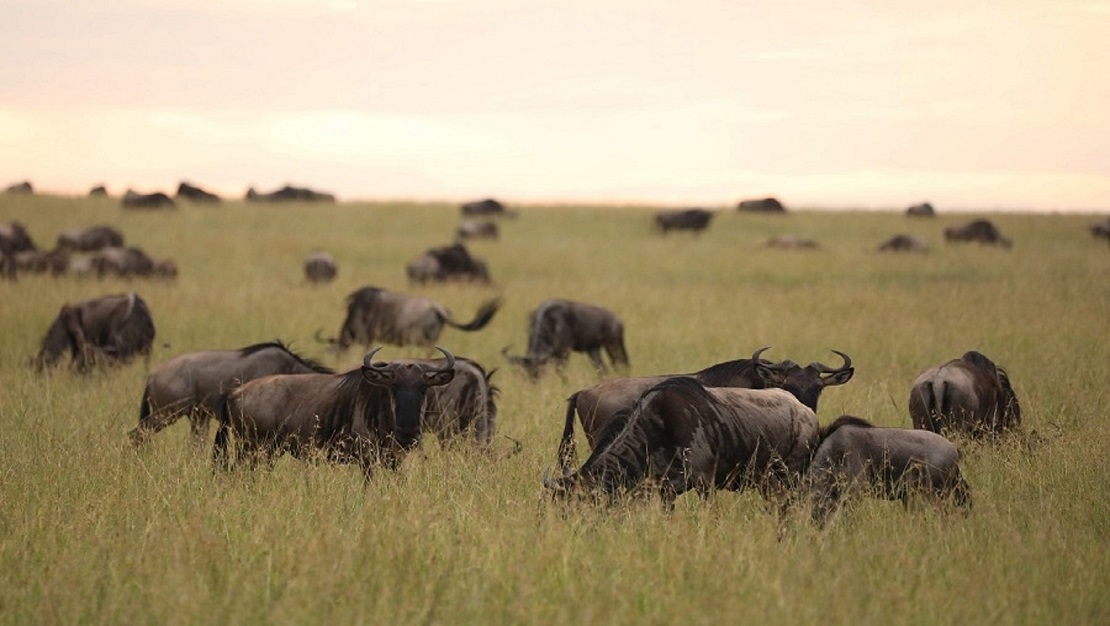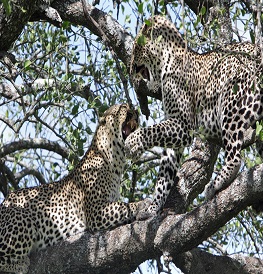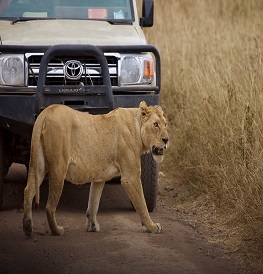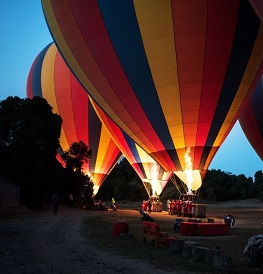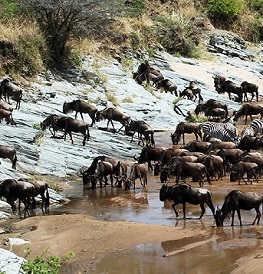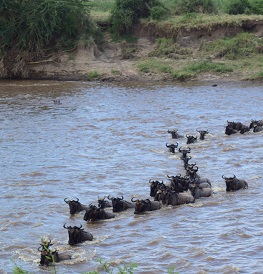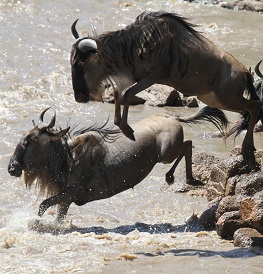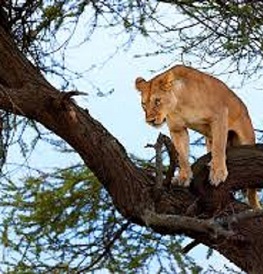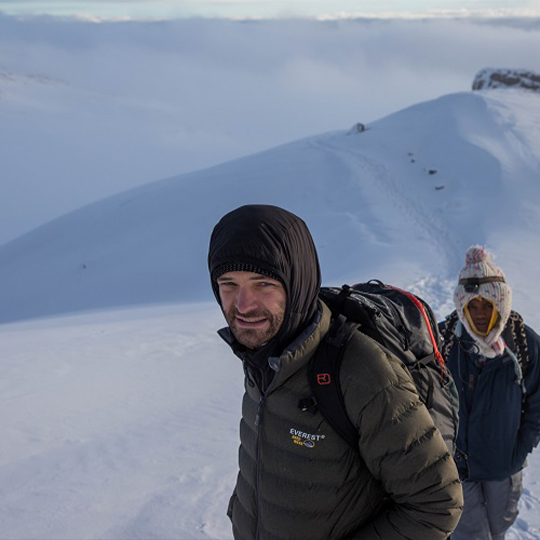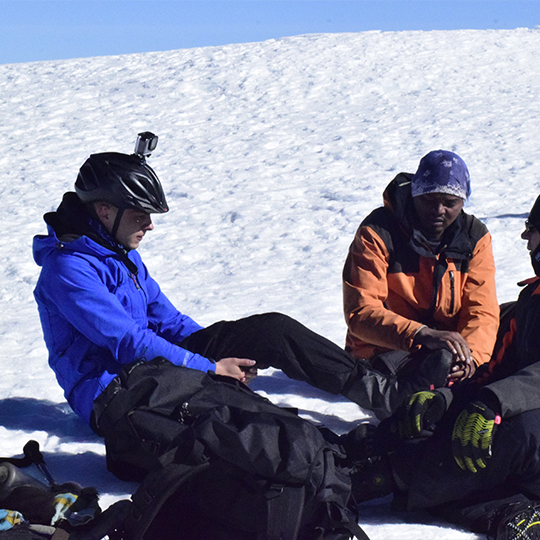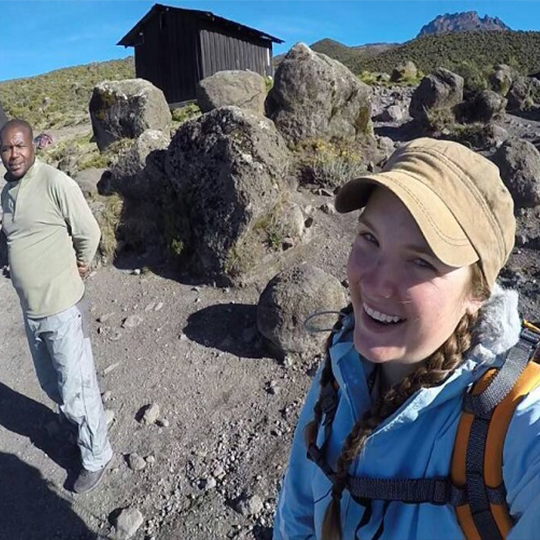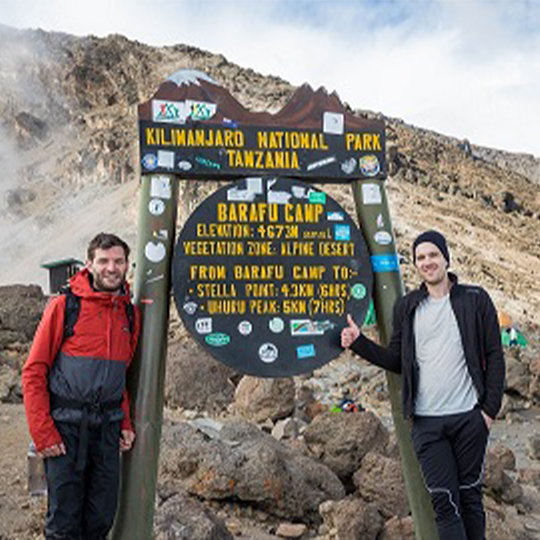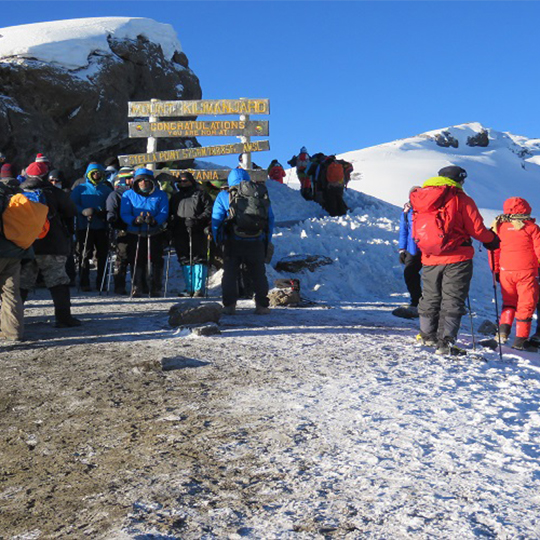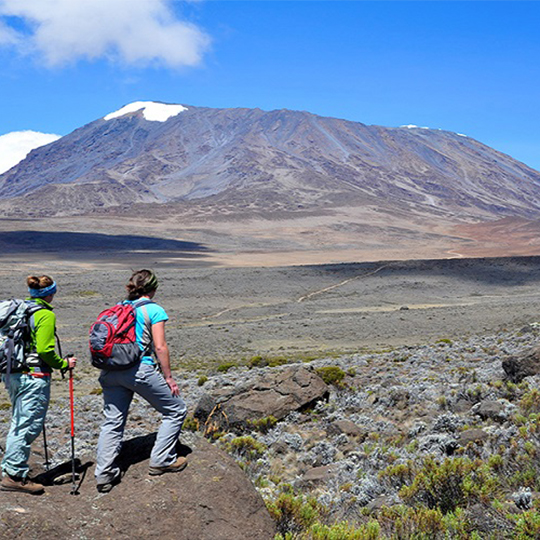Mt.KILIMANJARO CLIMBING TOUR PACKAGE
Welcome to the most popular hiking package on Mt.Kilimanjaro Found in TANZANIA
Welcome In Tanzania Peaceful Country where you we see wonderfully natures with KILIMANJARO MOUNTAIN that gives you special packages.....
This dormant volcanic mountain has 3 peaks, but only two are accessible. Mawenzi Peak is a technical one , where as Kibo Peak is not, hence most people when they talk about climbing Kilimanjaro they talk about reaching the summit of Kibo Peak.
The third peak is Shira, but doesn’t exist any more due to further volcanic eruptions thousands of years ago.
mount Kilimanjaro trips and routes, Machame treking, Marangu climbing, Machame route, Lemosho trekking, Kilimanjaro climbing, Kilimanjaro climb, Kilimanjaro trek, Mountain trekking, Kilimanjaro trekking, Machame, Machame climbing, Machame trip, Machame climb, Marangu, Marangu treking, Marangu trip, Marangu climb, Lemosho, Lemosho trek, Lemosho climb, Lemosho climbing, Rongai, Rongai trek,Rongai climb, Rongai climbing, Umbwe, Umbwe trek, Umbwe climb,
Kilimanjaro Routes - Which Route is Best? Home Kilimanjaro Routes Some 30,000 people climb Kilimanjaro every year, making it one of Africa’s most popular attractions. And as Africa’s highest peak and one of the fabled Seven Summits, the summit is also one of the most challenging attractions to reach! Tanzania’s iconic mountain stands at 5895 metres but despite its intimidating size, conquering it is entirely feasible if you’ve got a good level of fitness and a decent amount of determination. To climb up Kilimanjaro, you’ll need both physical and mental strength, but that rewarding feeling and sense of achievement at the top will be completely worth it. kilimanjaro-Summit EDITED FOR POST.jpgsummit of kilimanjaro from plane There are nine different routes on the mountain of which seven are ascent routes and two are used for descent. Not all are recommended, one is now shut and quite a few merge with each other, but they do have their own particular pros and cons . Here is a breakdown of each of the routes for climbing Kilimanjaro: Machame Route (“Whiskey” Route) Lemosho Route Shira Route Rongai Route Northern Circuit Route Marangu Route Western Breach/Arrow Glacier Route And there are two routes used for descent. They are: Mweka Route Umbwe Route Kilimanjaro route options.png MACHAME ROUTE – HIGHLY RECOMMENDED! Kilimanjaro Machame Route map Also known as the Whisky Route, the Machame Route offers excellent acclimatisation because three of the campsites are at the same altitude which is a big benefit to the body as you ‘climb high, sleep low’ which is good mountaineering practise. The route is approximately 62 km/ 37 miles from gate to gate, and the starting altitude at Machame Gate is 1640 metres. Machame is also the route that provides the most distinctive view of the five ecosystems on the mountain - cultivated farmland, cloudforest (montane), alpine heath, high desert and the glaciated summit. This is a big reason for the popularity of the route. Each campsite is really quite different from the other, and each day is like entering a different world, from the lush jungle to dense forest, then low brush on the vast lava plateau to the surreal world of huge volcanic boulders, followed by the rock and scree on the massif and finally the glaciers on the crater itself. Machame gives climbers the thrill of a mountain challenge and currently accounts for about 50% of all visitors. It is a camping route and suited to people with plenty of hiking and camping experience, The seven day version is what we recommend and has a very high success rate of about 85%; the most common reasons for descending are tiredness, stomach upset from local food bought in Moshi, and altitude sickness. This route is physically tough, requiring good fitness and determination especially on the summit night which begins at midnight with a summit at about 8am. It’s entirely possible for beginners to complete the challenge with fitness training and the help of qualified guides. DAYS: The recommended time is seven days, with five of those days ascending from the Machame Gate on the southwest side of the mountain. The number of days directly relates to altitude acclimatisation, so we would not consider less than seven days which is the minimum number recommended by the International Climbing and Mountaineering Federation (UIAA). DIFFICULTY: This route is mostly strenuous, initially with ups and downs and navigating a succession of valleys and ridges and plateaux and then the unrelenting scree slopes up the central massif to the crater which is quite steep and challenging. However there is nothing technical in the challenge and you are not required to use ropes. Summit morning in the dark can be very cold, icy and windy as it follows a number of zigzags up the rocky slope which is often covered in snow and ice. At the altitude of nearly 6000 metres it will require mental power and good physical health and fitness. SCENERY: The Machame Route is a favourite mainly because of the variety of habitats you pass through and the attraction of the flora and fauna, much of which is endemic to the mountain. What other mountain in the world starts with farms of giant banana trees and coffee plantations into steaming jungle and then cloud forest, and then out of the forest into alpine heath and moorland to the strange volcanic rubble on a bleak plateau, arid alpine desert and finally a glaciated summit which is actually an arctic region at just under 6000 metres right on the equator? There’s so much variety in the terrain and landscape, with the vastness of the Shira Plateau, the imposing Lava Tower, and the sheer cliffs of the Barranco Wall. Giant groundsel and lobelia loom out of the mist, waterfalls and streams have carved the mountainside into deep ravines and narrow ridges that radiate from the central massif like spokes on a giant wheel. The glaciers glint in the distance, evidence that only 20 years ago the whole massif was snow covered. PROS AND CONS: Breathtaking scenery and steady acclimatisation with three nights sleeping at the same altitude are the main benefits of choosing the Machame Route. The paths are well maintained, the campsites have good toilet facilities and the success rate is high. However with 50% of climbers on this route it is probably the busiest nowadays, depending slightly on time of year. Summit morning can be very busy, especially on a full moon night, and the campsites can be extremely busy with several hundred people spread out. The distance from Moshi to Machame park gate is about one and a half hours so not too far, and descending the Mweka route means a quick 30 minute journey back into town at the end. BEST GUIDED TREKS: Book a 7 day camping trip on the Machame Route with us for £1,895pp. The price includes qualified local guides with UK first aid qualifications and specialised training in high altitude medicine, all accommodation in the hotel and 2 person tents with mattresses, all camping equipment and private toilets plus three meals per day on the mountain. LEMOSHO ROUTE – HIGHLY RECOMMENDED! Kilimanjaro Lemosho Route map The Lemosho Route begins on the west side of the mountain and is normally an eight day trip but can also be seven days. It merges with the Machame Route on the Shira Plateau which is the second camp, and is popular because the initial ascent through the forest is easier and it adds an extra vital day of acclimatisation if you choose the 8 day option. Lemosho is a relatively new route and it was designed to absorb some of the busier paths on the other two main routes of Machame and Marangu. The extra day and the slightly easier gradient through the forest makes it a slightly better option for acclimatisation. The first two days journeys through the Lemosho Glades, which is the rainforest that encircles the mountain at this altitude between 2400 and 3500 metres where you might see Colobus monkey, and plenty of birds on the giant camphorwood trees. The forest thins out and the path climbs onto the vast Shira Plateau which was created during the last eruption an estimated 50,000 years ago. The route then skirts the southern flanks of the mountain, with campsites at Barranco and Karanga Valley both at the same altitude which assist with acclimatisation. Then the path moves up to the final camp at Barafu (“ice” in Swahili) at 4600 metres which is the springboard for the big eight hour push up to the summit through the night. DAYS: Allow eight days for the Lemosho Route for the best experience but don’t spend any less than 7 days/6 nights on the mountain so you can acclimatise safely. This is an appropriate time regarded by all guide associations as safe for a mountain of this size. DIFFICULTY: The difficulty level is very similar to the Machame Route, with a variety of ups and downs and crossings over valleys and ridges, the dry air of the high plateaux and the unrelenting scree slopes to the crater rim. Camping at altitude is tiring and every day the less oxygen in the air will certainly be evident in your panting and tired muscles. The first two days of the Lemosho route are easier as the route has less of a gradient through the forest, but it is also longer. Overall this is a benefit, however it is as well to point out that the time to the start gate at Londorossi and doing the park formalities is longer. SCENERY: Lemosho is almost the same as Machame route in terms of the scenery with equally as distinctive ‘layers’ of habitat and ecosystems to journey through. The longer trail through the low level forest is particularly attractive and you are more likely to see some wildlife here than on the busier Machame side. The first camps at Mti Kubwa (Big Tree), Shira 1 and Moir Hut are quieter too, so there is a greater impression of remoteness and solitude. PROS AND CONS: The additional day on the mountain makes the trip more expensive, but the eight day programme is better for acclimatisation and allows a 90% summit success rate. The distance to the Londorossi park gate from Moshi or Arusha is longer and you are required to complete the park formalities before then driving further up the trail to the actual hiking starting point. This can mean not starting to walk until the afternoon. The initial route through the forest is longer and easier, and you are more likely to see some wildlife. After day 3 the route merges with the Machame route which means you will come across the busier campsites at Barranco and Karanga and then Barafu. BEST GUIDED TREKS: Book an8 day camping trip on the Lemosho Route with us for £2,245pp. The price includes our qualified local guides, hotel accommodation, 2 person tents and camping equipment, all meals on the mountain and park permits. Mount Kilimanjaro SHIRA ROUTE - HIGH STARTING POINT, LESS RECOMMENDED Approaching Kilimanjaro from the west, the Shira Route shares a lot of similarities with Lemosho. In fact, Shira was the original route and Lemosho was later established as a better and alternative. But unlike Lemosho which starts at the Londorossi Gate and walks through the beautiful rainforest, Shira Gate at 3600 metres is accessed from a higher point by car, putting your starting point at the Shira Ridge. This means that the trekking journey for most people coming straight off the plane is too much, so it is not really a recommended route except for those who might be previously acclimatised (for example on Mount Meru). DAYS: Seven days is recommended for the best acclimatisation and on this route it would be a good idea to spend two nights at the first camp (Simba) to help with that process, or else it’s more likely you will suffer from altitude sickness. Better still would be an eight day option with two nights at the first camp and a further two nights at the next camp on the Shira Plateau followed by the next two camps at Barranco and Karanga being more or less the same altitude. Done this way, Shira route would work well. SCENERY: Similar to Lemosho at the start with extensive rainforest, the route eventually joins up with the Machame route with the camps around the base of the summit massif and then the final push on scree and rock to the crater. PROS AND CONS: Although you’ll enjoy panoramic vistas with far fewer lesser crowds than Machame or Marangu, the high starting altitude of the gate means that climbers are much more likely to experience altitude-related symptoms on day one. These include headaches and dizziness, nausea and vomiting, fatigue, shortness of breath, or even loss of appetite. If you can overcome this initial jump in altitude and manage additional days to acclimatise then it’s certainly possible to do this route. Also the cost of extra transport getting to the gate means this route is more expensive. RONGAI ROUTE – BEST FOR RAINY SEASON AND QUIETER TRIP Kilimanjaro Rongai Route map As the only route that approaches the mountain from the north, the Rongai Route is quite different from the others. You will begin your trip from close to the Kenyan border, and journey through areas of wilderness before joining the Marangu Route at Kibo Camp which is at the base of the summit massif. The descent is then on the Marangu Route so this is almost a complete north-south traverse of Kilimanjaro. The north side experiences lower precipitation, being in the rain shadow, so this trail is ideal for the rainy season as it is more sheltered. It is a much quieter route than the others, mainly because the extra time it takes to reach the gate at the start, so for many people this is their preferred route. DAYS: The recommended time is seven days as the optimum time for a good summit success rate, however as ever eight days adds the extra acclimatisation and will increase both the summit rate and the enjoyment of summit day. Therefore for enjoyment and summit success we would definitely recommend eight days. DIFFICULTY: This route is considered to be one of the easier routes up Kilimanjaro with a more gradual ascent up to the summit massif. For those with less backpacking and hiking experience, this may be preferred. On summit day itself the route reaches the summit crater at Gilman’s Point further away from the actual summit than the other routes, so psychologically this does make a difference. Having slogged through the night to reach the crater, it is that bit further than people on the Machame/Lemosho route to reach the escarpment to the summit proper. SCENERY: While the scenery doesn’t offer as much diversity or share the same wow factor as Machame or Lemosho, it does promise remoteness with some areas of untouched natural beauty. There are more days in the forest and heath, with less distinctive difference between the habitats. You are less likely to experience the eerie lunar-like formations of the high alpine desert but on the plus side it is less likely to be wet. PROS AND CONS: Rongai offers a less challenging way up with an easier acclimatisation profile and lower traffic. It’s also the best trail if you’re hiking outside of dry season. The downside is that the views aren’t quite as captivating as the Machame or Lemosho routes, and the extra psychological push needed to get from the crater rim at Gilman’s Point up to the summit. BEST GUIDED TREKS: Book a 7 day camping trip on the Rongai Route from £1,955pp. The price includes qualified local guides, accommodation, 2 person tents and camping equipment, plus 3 meals per day on the mountain. NORTHERN CIRCUIT ROUTE – GOOD IF YOU HAVE MORE TIME One of the newest routes on Kilimanjaro, the Northern Circuit is also the longest and in many ways the most spectacular because you see so much of what the mountain offers. Due to the additional length of time for acclimatisation, success rates for the summit are higher. It has the same starting point as the Lemosho Route but deviates north before the Lava Tower, circumnavigating round the north section of the mountain and summitting Uhuru Peak via Gilman’s Point (Marangu and Rongai routes also summit via this point). On this trail you will get an opportunity to journey through the quiet and rarely visited northern slopes, which really give a heightened sense of adventure and remoteness on this mountain which attracts so many hikers every year. DAYS: This is a trail that requires nine days as a minimum but can be completed in ten or eleven days if you want more time to enjoy the views. DIFFICULTY: In terms of difficulty, the Northern Circuit is similar to the Machame or Lemosho routes. Physical and mental stamina are important as it is a longer trip, but acclimatisation will be better as you have longer to adapt to the less oxygen in the air. It’s a camping route with staff providing the campsite set-up, and on a trip like this you really do get embedded in the outdoor routine. The days vary in length but as usual it’s the long summit day that is the hardest, although on this route it won’t seem nearly as hard on the lungs. SCENERY: With fantastic panoramic views and diversity with the different habitats, you will experience everything that is special about Kilimanjaro with the added bonus of having the mountain to yourself most of the time. PROS AND CONS: This is considered one of the safer trails in terms of acclimatising as there will be plenty of time to get your body used to the altitudes. You will also get to enjoy 360-degree views with fewer crowds around. Obviously being a longer trip it is more expensive but ultimately, considering this is such an iconic peak which has become one of the great ‘bucket list’ aims in life, the money is definitely worth it. BEST GUIDED TREKS: Book a 12 day adventure on the Northern Circuit from £2,445pp. The price includes qualified local guides, accommodation, 2 person tents and camping equipment, plus 3 meals per day on the mountain. MARANGU ROUTE – RECOMMENDED IF YOU WANT TO SLEEP IN HUTS The Marangu Route (also known as the ‘Coca Cola Route’) is the oldest and most established route on Kilimanjaro and used to be the most popular. It’s considered to be the easiest way up in terms of gradient and terrain. It is also the only route on the mountain that has huts to sleep in. However the ascent and descent are done on the same pathway which can mean the route gets busy and the huts can get quite full. However it’s a very useful trail for families and groups looking for the comfort and convenience of a hut, and avoiding having to use the mountain tents. It’s a useful route to do in the rainy season if only to avoid having wet clothes inside a tent. It’s an easier route with no real difficulties on the path but it doesn’t share the distinctive difference in scenery that you see on the other tracks, The early days on the huge plateau covers open ground and scrub all the way until the final hut below the summit massif. The summit day itself is just the same level of difficulty though, with the same amount of elevation to cover to reach the crater rim at Gilman’s Point and then Uhuru Peak. DAYS: Our minimum number of days on Kilimanjaro is always seven days, irrespective of the route, in order to maintain safety parameters and allow for acclimatisation on a mountain that is nearly 6000 metres high. Many people try to climb the Marangu route in less than seven days but this is not to be recommended. DIFFICULTY: With a gradual slope, this path is considered to be one of the easier routes on Kilimanjaro. SCENERY: The initial days ascend through the steamy forest and band of montane which encircles the whole mountain, and on this route you then spend several days crossing a large plateau and approaching the summit massif directly (as opposed to going round the massif as with Machame and Lemosho). There aren’t the same distinctive variations in habitats, but the views of the summit massif ahead are still beautiful. PROS AND CONS: As one of the easier trails this could be suited to climbers with less experience. It’s also the only route with sleeping huts and dormitory-style accommodation, so good for families or groups wanting to avoid the camping experience. The distance from the gate to Moshi is the shortest too, so an easy beginning and end to and from the hotel. WESTERN BREACH - MOST DANGEROUS ROUTE This route is now closed by the National Park because the melting of the ice on Kilimanjaro has meant there is now a danger of falling rocks which led to the death of three American climbers In January 2006. Another incident in 2015 led to a near fatality, and since then very few people have climbed this route. The Park will only allow experienced alpinists on this route if they sign a disclaimer and for obvious reasons, local guides are not keen on ascending it. The breach is a notch in the crater rim and the route is by far the most difficult on the mountain. The approach follows the Machame route and diverts at the Lava Tower to ascend higher to the Arrow Glacier, which has since retreated to a fraction of what it used to be. This change is what now makes the route so dangerous because the gully which used to be tight with ice is now effectively a giant bowling alley with rocks spinning down from a great height and completely invisible at night. The route reaches an angle of 45 degrees and there are numerous rock steps to negotiate, in fact there is no single route or path to follow, it depends on the conditions on the day you ascend. Nowadays the main aim would be to avoid being exposed to falling rock of course, something which cannot be completely guaranteed unfortunately because back in the day this was the most exciting and dramatic route on the mountain. UMBWE ROUTE – USED FOR DESCENT The Umbwe route is the most direct route on the mountain, it ascends steeply through forest up to Barranco Camp on the south side. This means that in terms of acclimatisation it would be the hardest to adapt to. The Kilimanjaro National Park designated this route to be a descent route some years ago so therefore it’s not possible to ascend the Umbwe route anymore. It’s commonly used by porters to deliver food supplies up to Barranco Camp, and it’s also used a quite retreat for people who are sick at either Barranco or Karanga Camp. The route is mostly forested, a steep trail that ascends directly up a narrow valley from the roadhead to the Barranco Camp. MWEKA ROUTE – USED FOR DESCENT Similar to Umbwe, Mweka Route is only used for descent nowadays and also is on the south side of the mountain. It is the most direct route for people coming off the summit on the Lemosho or Machame routes which use Barafu Camp as their final staging point for the summit. Coming off the summit, people come back to Barafu for a lunch and then descend directly down the Mweka route to Millennium Camp at the forest line for one more night under canvas. The next morning the Mweka route continues through forest and eventually onto a road to reach Mweka Gate which is where you can get sign out of the park and receive your summit certificate. Because the roadhead ascends quite a way up through the forest, this route is popular for emergencies on the basis that a jeep or ambulance can make it quite high to pick up an invalid. Want to find out more about guided tours up Kilimanjaro? Take a look at ourpreferred routes and book your trip of a lifetime from £1895.00 – including accommodation and food, all camping equipment, transport, and all park and campsite fees. ……………………………………………………………………………………………………………………………………………….. Lemosho route Distance covered: 70km Days to complete: between 7 and 8 days Shira was the ‘original’ Lemosho route while Lemosho is now the ‘improved’ variation. The Lemosho route begins at Londorossi gate on the quieter western side of the Kilimanjaro. It advances through rainforest on the first two days and later passes through a scenic heath zone with an abundance of Ericas. With eight days, this is the longest route up Kilimanjaro; from the third day it runs parallel to the Machame route. It is a difficult route, but excellent for acclimatization. It is considered to be more difficult than the Marangu and Rongai routes. Lemosho Route up Kilimanjaro Scheduled climbs on this route Sheduled-Lemosho3 Lemosho 8 Day Climb Take an extra day to enjoy the varied climate zones of this scenic and challenging route and better acclimatize to the altitude viewclimb Sheduled-Lemosho4 Lemosho 7 Day Climb The Lemosho route is lesser known, longer and very scenic.It begins on the western side of Kilimanjaro. viewclimb Private climbs on this route Private-Lemosho Lemosho Route Private climbs for the scenic and lesser-known Lemosho route depart on whichever day you choose viewclimb Lemosho Route with Crater Overnight A long and picturesque route showing the full extent of Kilimanjaro’s striking landscapes and different climate zones. viewclimb Lemosho Route via Northern Circuit One of the newer routes offering spectacular views from different sides of the mountain. Explore the largely untouched northern slopes. viewclimb Lemosho Timelapse Video Kilimanjaro Experience NAVIGATE: HOME KILIMANJARO CLIMBS KILIMANJARO ROUTES ENQUIRE CONTACT PRIVATE CLIMBS: LEMOSHO LEMOSHO VIA NORTHERN CIRCUIT LEMOSHO WITH CRATER MACHAME MACHAME WITH CRATER MARANGU RONGAI UMBWE SCHEDULED CLIMBS: LEMOSHO 7 DAY LEMOSHO 8 DAY MACHAME 7 DAY MACHAME 6 DAY MARANGU 6 DAY ^^^^^^^^^^^^^^^^^^^^^^^^^^^^^^^^^^^^ Machame route Distance covered: 63km Machame route: minimum of six days The Machame route is often considered the most striking and has spectacular views of the summit, but it is weather dependant. The route faces the wind and is on the southern side of the mountain where rainfall is heavier and the vegetation more dense. The route is steeper than both the Marangu and the Rongai routes and physically more demanding, but very good for acclimatisation. It joins the Lemosho route from New Shira Camp. Machame route is the most popular route with our guests – about 60% of our guests climb Kilimanjaro via the Machame route. Machame is nicknamed the ‘whiskey route’. You will descend along the Mweka route. This option is generally for slightly fitter hikers. Machame route up Kilimanjaro Scheduled climbs on this route sheduled-Machame2 Machame 7 Day Climb Enjoy this popular and picturesque route at a more leisurely pace to take in more of the sights and better prepare yourself for the summit viewclimb sheduled-Machame Machame 6 Day Climb The Machame route is one of the most beautiful trekking tours to the top of Kilimanjaro. viewclimb Private climbs on this route Private-Machame Machame Route Private departures for the picturesque and popular Machame Route can depart on whatever day you choose. viewclimb Machame Route with Crater Overnight This new route allows a unique experience of spending 1 night in the crater rim of Kilimanjaro before you summit. ^^^^^^^^^^^^^^^^^^^^^^^^^^^^^^^^^^^^ Marangu route Distance covered: 69km Days to complete: minimum of five days, but Kilimanjaro-Experience only does the six-day trek Marangu route is the oldest route and often considered the easiest. It is nicknamed the “Coca Cola”route, as it is popular and attracts a larger number of climbers than other routes. It approaches Kili from the southeast and passes through beautiful rainforest and moorlands. The ascent on this route is constant and moderate, and the trekking is relatively relaxed compared to sections of other routes. This is a good bet for those concerned about their fitness. Marangu has good paths and gradual tracks. However, the constant ascension makes for a poorer acclimatisation profile. In contrast to the other routes, you overnight in mountain huts protecting you from the elements, as opposed to sleeping in tents. Following the Marangu route, you ascend and descend on the same route and you will meet other groups travelling in the opposite direction. Marangu route Kilimanjaro Scheduled climbs on this route Scheduled Marangu Route Marangu Route The Marangu route is perhaps the easiest and most comfortable way to reach the summit of Kilimanjaro. viewclimb Private climbs on this route Private Marangu Marangu Route Take the famous so-called Coca Cola route to the summit of Kilimanjaro. ^^^^^^^^^^^^^^^^^^^^^^^^^^^^^^^^^^^^^^ Rongai route Distance covered: 70km Days to complete: minimum of 6 days The remote Rongai route begins on the side of the mountain close to the Kenyan border, running on the dry northeast side of Kilimanjaro. It takes a long drive to get to the starting point. It is the only route that approaches from the north and can be drier than most routes if you hike during the rainy season. The acclimatisation profile is fair. The route is less crowded, moderately steep, crosses a beautiful alpine desert zone and allows for good views towards Kenya and the Kibo summit. On this route, you return via the Marangu route. Rongai Route up Kilimanjaro Private climbs on this route Private-Rongai Rongai Route The remote Rongai route starts on the northern side of Kili, it is a good option as the northern side of the mountain is usually drier. ^^^^^^^^^^^^^^^^^^^^^^^^^^^^^^^^^^ Shira (Londorossi) route Distance covered: 56km Days to complete: seven days Those hiking the Shira (Londorossi) route will drive to the Londorossi Gate together with their transfer driver and then to the Moram Barrier at an altitude of about 3800m. It is important that you have allowed for sufficient days to acclimatise to master this increase in altitude.. The route is very similar to the Lemosho route, accessing Kili from the west. Shira (Londorossi) crosses the spectacular Shira plateau and later joins the Machame route. This difficult route allows for good acclimatisation, provided you are fine starting at a high altitude. ^^^^^^^^^^^^^^^^^^^^^^^^^^^^^^^^^^^^66 Umbwe route Distance covered: 51km Days to complete: minimum of five days The Umbwe route is a relatively short and very steep but scenic route approaching from the south. It is the least used and most demanding of all routes. As its challenging ascend is not popular with most climbers, it is instead often used for emergency descent from the Machame or Shira routes. This route has great views, but it is the most difficult way to reach the summit. Altitude acclimatisation is difficult due to the fast ascent and the success rate is very low. Kilimanjaro Umbwe Route Private climbs on this route Umbwe Route Kilimanjaro Umbwe Climb This route is short, steep and scenic. It is the least used route and also the most demanding. ^^^^^^^^^^^^^^^^^^^^^^^^^^^^^^ THE NORTHERN CIRCUIT KILIMANJARO The Northern circuit up Kilimanjaro is the newest and lesser-used route that circles the north side of Kibo peak. It is also regarded as one of the best routes up Kilimanjaro. Climbers using this route must use another one to reach the summit. The trail follows the alpine desert band around the peak and offers amazing views over the lowlands below. It is good for acclimatisation and is incorporated into custom-made trips. This is a very long route, its total length depending on the access route. The Northern circuit Kilimanjaro is a rewarding and challenging climb for those who choose this option. Private climbs on this route Northern circuit Kilimanjaro Lemosho Route via Northern Circuit This is one of the longest routes on the mountain giving you time to acclimatize. It is picturesque and largely untouched. ^^^^^^^^^^^^^^^^^^^^^^^^^^^^^^^^^^^^6 THE SUMMIT CIRCUIT The Summit circuit contours around the base of Kibo Crater and connects a few overnight sites. From different points you can choose a route to ascent to the summit. Many hikers like to take the spectacular southern part of the circuit only, where one can leave the circuit at a number of points. The Northern circuit runs along the north side of Kibo crater. The total distance depends on the ascent route you choose. ^^^^^^^^^^^^^^^^^^^^^^^^^^^^^^^^^^^^^^^^^^^^^^^^^^^^^^^^ ……………………………………………………………………………………………………………………………………………………………………………………… Kilimanjaro Routes – A Complete Overview Last Updated on: October 13, 2021 Are you trying to work out which Kilimanjaro route to choose for your trek? Fear not, this page will help you make the right choice. Each Kilimanjaro route has its own pros and cons. Some are great for scenery, but not so great for acclimatisation. Others offer high summit success rates but are also quite busy at certain times of the year. Let’s jump in and look at the various Kilimanjaro routes to the summit. Kilimanjaro Routes Map MIQ_Kilimanjaro Routes map_All routes (72ppi) There are seven main Kilimanjaro routes that one can use to trek the highest mountain in Africa. The eighth Kilimanjaro route, Mweka, is used for descent only. The Machame Route and Umbwe Route depart from the southwest side of the mountain and then use the Southern Circuit via Barafu and Stella Point to approach Uhuru Peak. Similarly, Shira Route and Lemosho Route also use the Southern Circuit to approach the summit and the Mweka route to descend; however, both routes begin on the far western side of the mountain. Marangu Route begins in the southeast and approaches Uhuru peak via Gilman’s Point. It is the only route on Kilimanjaro that has hut accommodation for the entire climb and uses the same trail to ascend and descend. Rongai Route starts from the North-East and passes through the Saddle situated between Kibo and Mawenzi Peak to approach the summit via Gilman’s Point. The Rongai route descends via the Marangu Route. The newest and longest route is the Northern Circuit which uses the same starting point as Lemosho but veers north before Lava Tower, circling around the north of the mountain and approaching Uhuru Peak via Gilman’s Point. The Western Breach is a difficult trail that was closed due to a tragic rock-fall in 2006 that killed three trekkers. The route has subsequently re-opened but is seldom used by tour operators as it offers poor acclimatization, is steep and remains rather unsafe for inexperienced trekkers. Trekkers who use the Western Breach usually approach from the Umbwe Route up to Lava Tower, before taking a steep ascent past Arrow’s Glacier and up the Western Breach to Crater Camp and Uhuru Peak. The Western Breach can also be approached using the Machame, Shira and Lemosho Route. Descent is usually via the Mweka Route. As alluded to above, there are three summit passages to the summit of Kilimanjaro. The first is via the southern slopes of Kibo, up to Stella Point and then west around the crater rim to Uhuru Peak. This approach is used by trekkers on the Lemosho, Shira, Machame and Umbwe Routes. stella point The second summit passage approaches from the Eastern side of Kibo, up to Gilman’s Point and then west around the crater rim to Uhuru Peak. Trekkers on the Rongai and Marangu Route, and Northern Circuit use this passage to the summit. Thirdly, trekkers can use the more technically challenging approach to the summit via the Western Breach. Kilimanjaro Route Summaries Below we have highlighted some of the key features on each of the Kilimanjaro Routes. Click on the individual Kilimanjaro routes to find out more information. Our Recommended Southern Circuit Routes Machame Route machame route kilimanjaro The Machame route is highly recommended for scenic value and has a medium to high success rate, especially if you choose the seven-day itinerary. The six-day option is not recommended for first-time trekkers It is a good Kilimanjaro route for acclimatization as it has a climb high, sleep low opportunity for trekkers on day three. Here trekkers climb from Shira Camp 2 to Lava Tower at 4,600 meters, where they have lunch and then hike back down to Barranco Camp (3,900 meters) to sleep Like all Kilimanjaro routes, the Machame is a challenging trek with stunning scenery through four diverse climatic zones There is a good opportunity to split pre-summit day climb by adding an extra rest day at Karanga Camp (only available to seven-day trekkers) to leave hikers well-rested before summiting The route has however got very popular over the past few years which means it can get busy, especially at Barranco where climbers join up with trekkers from the Lemosho, Shira and Umbwe routes The Machame route only offers fully catered camping Lemosho Route lemosho route The Lemosho is a beautiful route that departs from the West side of Mount Kilimanjaro Due to its route profile, the Lemosho can be completed on a seven or eight-day itinerary and offers lots of opportunities to properly acclimatize. Because of its versatile route profile, it is a highly recommended Kilimanjaro route that has relatively high summit success rates It is also recommended as the starting point is relatively remote and hence provides trekkers with a rather untouched and wild start to their Kilimanjaro adventure. Spotting large wildlife, like antelope, buffalo and even elephant is unusual but not impossible The route also provides unparalleled and spectacular views of the dramatic gorges that characterize the western side of Mount Kilimanjaro The Lemosho offers trekkers the experience of hiking across the Shira Plateau – one of the largest high altitude plateaus in the world Trekkers on the Lemosho typically converge with Machame route on day 3 at Barranco camp and use the Barafu camp route to the summit; however, it is now quite common for Lemosho trekkers to veer north before Lava Tower to join the Northern Circuit which circles the north side of Mount Kilimanjaro and follows an assault passage via Gilman’s Point. The Lemosho route can also be used by trekkers planning to climb the Western Breach to the summit Like the Machame Route, the Lemosho is fully catered camping only The Only Kilimanjaro Route With Hut Accommodation Marangu Route marangu route The Marangu route was Nicknamed the ‘Coca-Cola’ route as Coke used to be bought along the way in tea huts The route is often selected by unprepared, inexperienced climbers as a result of the reputation for being the “easiest” route, attributing to the lower success rate It is also the shortest Kilimanjaro route with a relatively poor acclimatization profile, which is a major contributor to the low success rates on the Marangu. The six-day itinerary does give trekkers an opportunity to climb high, sleep low; however, the elevation is moderate and not as effective as other climb-high, sleep-low opportunities that are present on other Kilimanjaro routes Out of all the Kilimanjaro routes, the Marangu route is the only one with dormitory-style accommodation in huts for the whole duration of the climb. The huts come with mattresses and basic amenities, making them a popular choice for budget operators who don’t have the right equipment to tackle the other Kilimanjaro routes The Marangu offers beautiful views from the Saddle but can be considered less scenic than other Kilimanjaro routes due to ascent and descent on the same trail Summit Safely and Successfully We do not sell tours, we share our knowledge. Get a quote from our recommended local trek operator. Get a trek quote The Only Northern Kilimanjaro Route Rongai Route rongai route The Rongai route is the only northern start point to Kilimanjaro, beginning on the North East side of Kilimanjaro National Park The Rongai offers a true wilderness experience on the early stages of the climb, and like the Lemosho route it is possible to see large wildlife like buffalo, antelope and elephant The Northern slopes tend to be dryer than the southern slopes which makes the Rongai a great Kilimanjaro Route for trekking during the wet season. However, because the northern slopes are dryer they can also be considered less scenic. That being said, a northern approach is often characterized by clear views of Kilimanjaro – something that is not that common from the southern side The Rongai is also a flatter route for the first few days which makes for easy trekking. The route is usually completed on a seven-day itinerary but has limited climb high, sleep low opportunities which means that acclimatisation opportunities are not as good as on other Kilimanjaro routes Typically the Rongai route uses the passage from School Hut up past Hans Meyer Cave and Gilman’s Point to Uhuru Peak The route descends via the Marangu route, hence the route has fully catered camping until the last night on the mountain – beers at Horombo Hut anyone? The Longest and Quietest Kilimanjaro Route Northern Circuit northern circuit route The Northern Circuit is the longest route on Mount Kilimanjaro and has one of the highest summit success rates as the route offers lots of climb-high, sleep-low opportunities, and time to acclimatise The route departs from the same start point as Lemosho but then joins the Northern Circuit near Lava Tower, before traversing the north slopes of Mount Kilimanjaro The summit assault is via Gilman’s Point The route can be completed on an eight or nine-day itinerary If you are looking for a quiet and wild Kilimanjaro experience, then this route is for you. Get connected with the Best Kilimanjaro Operator We do not sell tours, we simply provide impartial advice. Get a quote from our recommended local tour operator. Get a trek quote Kilimanjaro Routes (Not Recommended) Shira Route machame route Same as Lemosho, except Shira offers a higher start point and therefore poorer acclimatisation It is a route that we wouldn’t recommend because of its high start point Umbwe Route umbwe route The Umbwe Route has a short and steep beginning profile up to Barranco camp where trekkers join climbers from the Lemosho, Shira and Machame route Some Umbwe route trekkers don’t join the southern circuit at Barranco but instead continue north, up to Lava Tower and then onto the Western Breach The Umbwe has poor acclimatization opportunities due to its rapid ascent and therefore success rates can be low on this Kilimanjaro route Fully catered camping only Western Breach Route western breach kilimanjaro The Western Breach is the most technically difficult approach to Mount Kilimanjaro, but perhaps the most rewarding! The approach to the Western Breach usually starts on the Umbwe Route and then continues north and up from Lava Tower The Western Breach was closed due to fatal rockfall in 2006 but reopened in 2007 with a new and safer route configuration. Nonetheless, many tour operators don’t offer the Western Breach on their route roster Only advised for experienced trekkers – it is recommended that all Western Breach climbers use helmets and it is not uncommon to need point crampons during the wet season and sub-surface ice can be an issue Success rates are typically moderate to high as the route is usually only tackled by experienced high altitude trekkers Get connected with the Best Kilimanjaro Operator We do not sell tours, we simply provide impartial advice. Get a quote from our recommended local tour operator. Get a trek quote Kilimanjaro Routes FAQ If you have any questions about the various Kilimanjaro routes, please leave a comment below and we will respond within 24 hours. Post navigation Northern Circuit – The Newest and Longest Kilimanjaro Route Best Time To Climb Kilimanjaro ……………………………………………………………………………………………………………………………………………………. KILIMANJARO ROUTES & WHICH IS THE BEST ROUTE TO CLIMB KILIMANJARO? Which is the best route to climb Kilimanjaro? There are 7 main Mount Kilimanjaro routes which lead to the summit, Uhuru Peak, one of which starts on the Northern side of the mountain and the rest on the Southern side. After making the decision to climb Kilimanjaro, you’ll need to choose your route. 1. Northern Circuit Route 2. Lemosho Route 3. Shira Route 4. Machame Route (“Whiskey” Route) 5. Rongai Route 6. Marangu Route (“Coca-Cola” Route) 7. Umbwe Route The one question we are asked more often than any other is “which is the best route to climb Kilimanjaro”. And the answer depends on what you want. Here are our winners Highest success rate and overall best route to climb Kilimanjaro If you want the highest chance of summiting the best route to climb Kilimanjaro is the Lemosho route and Machame route over 7 or 8 days – excellent acclimatization and an easier summit night make these winners by a long way. And as reaching the top is the most important thing for most of our climbers we make this our overall winners as best route to climb Kilimanjaro. Most scenic route to climb Kilimanjaro The Lemosho route approaching from the West wins hands down for the best views with spectacular vistas in all directions. Quietest route to climb Kilimanjaro If keeping away from the crowds is your top priority the Rongai route has to be your choice as the best route for your Kilimanjaro climb. But be warned the success rate is lower. Most challenging route to climb Kilimanjaro If you are looking for an adventure and a really unique wilderness experience the crater camp option is the best route to climb Kilimanjaro for you- less than 1 % of climbers get to do this and all our climbers who do it rave about it. Our summary of the advantages and disadvantages of each route is below » Machame route – from USD 2,540 Highly recommended, best success rate. Allows “walk high, sleep low” for better acclimatization. Stunning scenery climbing through five diverse climatic zones. Ascent and descent is via different routes. Fully catered camping. » Lemosho Route – from USD 2,590 An excellent route to climb Kilimanjaro by with a high success rate. Allows climbers to “walk high, sleep low” enabling better acclimatization. Remote and spectacular approach with dramatic gorges and views of west Kilimanjaro. Shira route offers higher start point therefore is less good for acclimatization. Fully catered camping. » Marangu Route – from USD 2,350 Shortest route to the summit which means less time to acclimatize. Much lower success rate. Dormitory style accommodation which can be noisy. Less scenic due to ascent and descent on same route. » Rongai – Route from USD 2630 Only northern approach route to Mount Kilimanjaro’s summit. Offers a true wilderness experience on the early stages of the climb. Very tough final summit night. Less natural acclimatization with no opportunities to “walk high, sleep low”. Fully catered camping. » Umbwe Route – from USD 2590 Steep, short route with very low success rate. Poor acclimatization due to rapid ascent. Very remote and quiet for the first two days. Fully catered camping. Which route is best to climb Kilimanjaro? When you are planning your Kilimanjaro climb there are 6 factors that you need to take into consideration in deciding which is the best route to climb Kilimanjaro for you. Acclimatization Difficulty of the summit night How busy the route is What are the accommodation options Safety What is the success rate Acclimatization on Kilimanjaro When climbing to altitude the golden rule is walk high and sleep low. Following this rule minimizes the risk of altitude sickness and improves you chance of summiting. The best routes to climb Kilimanjaro for acclimatization are the Machame and Lemosho routes as these naturally allow you to walk high and sleep low. Difficulty of the summit night The toughest summit nights are on the Rongai route and the Marangu route: they reach the crater rim of Kilimanjaro on the North, opposite Uhuru Peak and more than 2 hours from the summit itself. The best routes to climb Kilimanjaro to avoid this are the Machame and Lemosho routes as they reach the crater at Stellar point less than an hour’s walk from the summit. An extra hour on what is already a very long day is often the straw that breaks the camel’s back. How busy the route is The amount of climbers on the mountain varies a lot depending on the season and on the day of the week but even taking this into account if you want to have the mountain more to yourself the best route to climb Kilimanjaro is the Rongai route. This route starts in the North and is used by a lot less climbers than the very popular southern routes. Accommodation on the climb The only route that you do not have to camp on is the Marangu route so if you hate tents this is the best route to climb Kilimanjaro for you. Be warned though the huts are very basic and noisy. Kilimanjaro Routes Safety We consider all of the routes except the Arrow Point route to be relatively safe if walked sensibly. We do not offer climbs on the Arrow Point route as the risk of falling rock is unmanageable . This is definitely not the best route to climb Kilimanjaro. Which route has the highest Summit Success rate As a result of the better acclimatization offered and the easier summit night the best route to climb Kilimanjaro in terms of summit success rate is the 9 Day Northern Circuit route ,Lemosho route over 8 days followed by the Machame route over 7 days. We operate group climbs starting every week through the year with different routes each week. If you are looking for a particular route you can see when we are running that route below. For travelers who have a few extra days in their schedule, Machame route is an excellent option. One or two additional days of acclimatization can make a big difference in the success rate, so trekkers who choose this route reach the summit more often, despite the fact that this is a more challenging hike than Marangu route. One of the biggest and most intimidating of those challenges is the Barranco Wall, a steep cliff face that can look quite scary upon first approach. In reality, Barranco isn’t nearly as frightening or difficult as it first appears, although you will have to watch your step, and possibly use your hands for extra leverage while scrambling over certain sections. The climb usually takes about an hour to an hour and a half to complete, and the view from the top makes it worth the effort. The downside of the Machame Route is that it can get crowded at times. Because it is so scenic, and offers a few extra days to acclimate, it is a popular choice for Kilimanjaro trekkers, which can make the trail and campsites very busy, particularly during the high season. Still, if you’re looking for the quintessential Kilimanjaro experience, it is difficult to beat Machame route. Climbing Kilimanjaro offers Machame as a seven day climb or as a six day climb. The six day variation combines days four and five, going from Barranco Camp to Barafu Camp without staying at Karanga. You Skip Karanga Camp LEMOSHO ROUTE KILIMANJARO The Lemosho Route is often considered the most beautiful of all the trekking trails up Mount Kilimanjaro. It is one of the newer routes on the mountain and shares a portion of the same path as Machame route, although it holds a few advantages over that route that definitely make worth considering, particularly for travelers who have some extra time. Starting the western flanks of Mount Kilimanjaro at the Londorossi Gate, the Lemosho Route wanders its way up one of the more remote sections of the mountain. The trail takes hikers through a beautiful rain forest where they might have the chance to spot wildlife along the way. Black and white colobus monkeys are routinely seen in the forests, as are blue monkeys, small lizard and a wide assortment of birds. From there, the path wanders out onto the Shira Plateau, crossing it from west to east on relatively flat and easy to walk terrain. Lemosho Route 3D Video Trail Overview The early days on the Lemosho Route provides plenty of solitude, as this trail sees far less traffic than Machame route and Marangu route. This makes an already-great trekking adventure even more spectacular as at times it will feel like you have the entire mountain to yourself. Eventually however, Lemosho route merges with Machame route, and the amount of traffic begins to increase. But if you’re looking for a little peace and quiet in the early going of the climb, this is a great option. Because it follows the Machame Route for a portion of the climb, much of the same scenery is found on Lemosho route as well, including the Lava Tower and Barranco Wall. But, in those first few days this trail offers some unique views of the surrounding landscapes that aren’t visible from any other place on the mountain. Travelers will get the chance to wander through pristine rain forests and hike up to the Shira Plateau, where once above the tree line stunning vistas await. Because of its remote nature and lengthier route, Lemosho takes a few extra days to trek. Most people spend seven or eight days on this trail, which causes the success rate to increase fairly dramatically. If you’re looking to maximize your chances of reaching the top of the mountain, this is certainly one of the best options to choose, particularly over Machame route and Marangu route. Despite the higher success rate however, it should be noted that Lemosho route is a more strenuous hike than the “Whiskey” and “Coca-Cola” routes. There are certain sections of the trail that are steeper and more demanding, and of course trekkers spend an extra night or two sleeping in tents as well. Still, the advantages of this route truly make it stand out from the others, making it an increasingly popular choice for adventurous travelers. Climbing Kilimanjaro offers Lemosho as 7 day or 8 day climb. The seven day variation combines days five and six, going from Barranco Camp to Barafu Camp without staying at Karanga. Lemosho Route 7 Days Itinerary Overview Starting from Londorossi Gate to the summit and finishing at Mweka Gate.For a day-by-day itinerary for the Lemosho Route please click on this link: 7 day Lemosho Route NORTHERN CIRCUIT ROUTE KILIMANJARO The Northern Circuit route is the newest route up Mount Kilimanjaro and arguably the best. That’s because the a combination of all of the best elements of the other routes, rolled into one fantastic hike. If you’re looking for beautiful scenery, plenty of solitude, a healthy challenge, and the potential to spot wildlife, this is definitely the route for you. The Northern Circuit route follows the same route as Lemosho route for the first few days, but rather than sticking to the south side of Kibo, it turns to the little-used northern trails instead. This path is virtually devoid of other trekkers and as a result, the campsites are quiet, peaceful, and practically deserted. Because the Northern Circuit route is longer than the other trails, it gives trekkers a chance to take in more of the mountain. Not only do they get a chance to hike across the awe-inspiring Shira Plateau, they’ll also catch glimpses of Kibo Peak and Uhuru Summit along the way. It also provides amazing views down onto the open plains that are found to the north of the mountain, something that is seen by only a handful of other hikers while climbing Kilimanjaro. Which Kilimanjaro route has the highest success rate? Northern Circuit Route has the highest Kilimanjaro Success Rate which is 98% and approaches from south of Kilimanjaro. It is the newest and longest route which offers the most spectacular view of overall 360 degree scenery of Mount Kilimanjaro. Climbing Mount Kilimanjaro on this route takes 8 to 9 days for the summit. Due to its extended length, much of which hovers around the same altitude for improved acclimatization, the Northern Circuit route has the highest success rate of any of the routes on Mount Kilimanjaro. The trek begins at the Londorossi Gate and makes its way up the western flanks of the mountain, passing through the rainforest and climbing onto the the Shira Ridge. From there, it is up to the Shira Plateau itself, before heading north to circle in a clockwise direction starting at the Moir Hut, then moving on to Buffalo Camp, and finally School Hut. Along the way, trekkers make an almost 360 degree hike around Kilimanjaro, before summiting from the east. So with everything that the Northern Circuit route has going for it, what’s the downside? The only issue with hiking this route is that it requires a bit of extra time, something that few travelers have. While most of the other routes can be done in as few as six or seven days, the Northern Circuit route often requires as many as nine or more. That often limits the number of people who can work this trail into their schedule, although those that do will find that it is completely worth it. Climbing Kilimanjaro offers the Northern Circuit 9 day trek. Northern Circuit 9 Days Itinerary Overview Starting from Londorossi Gate to the summit and finish at Mweka Gate. For a day-by-day itinerary for the Northern Circuit Route please click on this link: 9 day Northern Circuit Route MARANGU ROUTE KILIMANJARO The Marangu Route is the oldest and most well established trekking route on Mount Kilimanjaro, and it remains extremely popular, despite a wide variety of other options becoming available. This path provides trekkers with the classic Kilimanjaro climbing experience, offering sweeping views and a wonderful hiking adventure all the way to the summit of Uhuru Peak. That said, it also has some unique aspects that set it apart from any of the other routes as well, giving Marangu route a character and feeling that is entirely its own. Marangu Route Marangu route starting point One of the more interesting aspects of Marangu Route is that it is the only route up Mount Kilimanjaro that doesn’t allow camping, so instead of sleeping in tents, trekkers stay in permanent huts instead. These dormitory-style shelters provide extra protection from the wind and rain, which makes this route a popular one for travelers climbing during the rainy season, which comes in April and May. There are 60 bunk beds each at Mandara and Kibo Huts, and 120 bunk beds at Horombo Hut While staying at those huts, trekkers will sleep in bunk beds equipped with a simple mattress and pillow. They’ll also be able to purchase an array of candy bars, bottled water, and soft drinks, which is why Marangu route is often referred to as the “Coca-Cola Route.” Marangu Route offers a slow, steady climb to each of the daily camps, which has given it the reputation for being an easy trek. Don’t underestimate this trail however, as the approach to the final camp can be physically demanding with roughly 1000 meters of vertical gain on that day alone. Of course, summit day on Kilimanjaro is always a challenge no matter which direction you approach from, making the final steps onto the top all the more satisfying. Because it is one of the shortest treks to the summit – requiring just five days to reach Uhuru Peak – the Marangu Route is a popular one with trekkers who have a limited amount of time for their climb. The downside to this is that it doesn’t provide as much of an opportunity to acclimatize to the altitude. Because of this, Marangu route has the highest failure rate of any of the routes up Mount Kilimanjaro. Keep that in mind when choosing this option for your Kilimanjaro trek. The Marangu Route is also the only route that uses the same path going up and coming back down. That means that while the trail is a scenic one, trekkers will experience the same sites going up as they do going back down. And because it has traffic going both directions, Marangu can also get overly crowded at times too. Still, for a classic Kilimanjaro experience, it is tough to top this tried and true route to the Roof of Africa. Climbing Kilimanjaro offers Marangu as five or six day private climb. The five day variation does not have an acclimatization day on day three at Horombo Hut. Marangu Route 6 Day Itinerary Overview Starting from Marangu Gate to the summit and back to Marangu Gate. For a day-by-day itinerary for the Marangu Route please click on this link: 6 day Marangu Route RONGAI ROUTE KILIMANJARO Rongai route ascends Mount Kilimanjaro from the north-eastern side of the mountain, along the border between Tanzania and Kenya. The rongai route retains a sense of unspoiled wilderness. The Rongai route is the only route that approaches Kilimanjaro from the north. Rongai route is truly one of the more remote and wild trails on the entire mountain. Despite that however, this route offers trekkers plenty of advantages, making it a very appealing option for those looking for a unique experience on Africa’s tallest peak. Due to its remote nature, the Rongai Route is among the least visited of all of the trails on Mount Kilimanjaro. Those who choose this path will experience peace and quiet for much of the trek, encountering few other climbers prior to reaching the Kibo Camp, at which point the trail merges with the Marangu Route for the final push to the summit. Before that happens however, travelers will often have the path completely to themselves for hours or even days at a time, making this a good choice for those looking for solitude in a unique wilderness setting. Rongai route approaches Mount Kilimanjaro with a slow, steady climb, giving hikers a chance to acclimatize at a steady rate. This not only makes it one of the easier routes up the mountain, it also increases the success rate substantially. There are few major obstacles to overcome along this trail and the final day before summit day is a short one, giving trekkers a chance to rest, recuperate, and prepare for their climb to the top of Uhuru Peak. Because the Rongai Route starts on the north side of the mountain, not far from the border with Kenya, it is also the driest route on Kilimanjaro as well. This makes it a good choice for a trek all year round, but especially during the rainy season in April and May. Most of the rain storms tend to stay on the southern side of the mountain, allowing Rongai hikers to stay drier and warmer than those on some of the other, more popular, trails. Other advantages of choosing the Rongai Route include the potential to spot wildlife, including Colobus Monkeys, in the first few days of the climb. The campsites are also nicely staggered out across the route, ensuring that hikers spend a similar amount of time on the trail each day. And since the trail goes up the north side and down the south side, travelers get a sense of what Kilimanjaro looks like from different perspectives. If there is one criticism of the Rongai Route it is that it may not be as scenic as some of the other routes up Mt. Kilimanjaro. While it is true that the scenery isn’t as varied and dramatic as some of the other trails, there is still plenty to see and enjoy on this path too. And because you’ll encounter so few people, you’ll have an easier time soaking it all in. Climbing Kilimanjaro offers Rongai as a 7 day climb or a 6 or 7 private climb. The six day variation does not have an acclimatization day on day four at Mawenzi Tarn. Rongai Route 7 Days Itinerary Overview Starting from Rongai Gate to the summit and finish at Marangu Gate. For a day-by-day itinerary for the Rongai Route please click on this link: 7 day Rongai Route UMBWE ROUTE Umbwe route is one of the shortest routes to the Southern Glaciers and the Western Breach and it’s the most hardest and challenging route on Mount Kilimanjaro. The Umbwe Route is the trail for trekkers looking for a true climbing challenge. It is a quiet, seldom used path that can be very difficult, yet very rewarding at the same time. This is the route to choose if you want to test yourself on the slopes of Mount Kilimanjaro, far from the crowds that are found on the more common trails. While Umbwe route is a non-technical climb, it does offer steep ascents and requires trekkers to scramble over rocks and tree roots at certain points. It is the hardest and most direct route up the mountain and even features several exposed ridges that are not for the faint of heart. The fitness and stamina of hikers may be tested along the way and it is best for experienced mountain trekkers who are looking for a challenge. umbwe routeBecause of it’s steep, direct approach, the success rate on Umbwe route is lower than some of the other routes. To get the most out of this climb, trekkers are encouraged to be as fit and ready as possible, as this is a steady march uphill for the first few days, which is contrast to some of the other routes that make slow, steady ascents or wander up and down to aid in acclimatization. That said, the intense challenge of trekking the Umbwe Route is made up for by the spectacular views. At times, there are stunning vistas to be seen to both the left and the right as trekkers as they make their way up the trail. In fact, the early days of this path have arguably the best views of any part of the mountain, save perhaps the summit itself. Umbwe also happens to be one of the quietest routes up Mount Kilimanjaro too. Because of its reputation as a difficult climb, very few people actually walk this trail, leaving it open and relatively untouched. This helps to give trekkers the feeling that they are the only ones on the mountain until the route merges with Machame route near the Barranco Camp a few days into the hike. From there, it follows the familiar Southern Circuit below the Southern Ice Field before turning up towards the summit from Barafu Camp. As with most Kilimanjaro climbs, the descent is made along the Mweka Route. If you’re looking for the absolutely best views on the way up Mount Kilimanjaro, and you enjoy testing yourself in the wilderness, Umbwe route will provide you with everything you seek, and then some. It is the closest thing you’ll find to a true mountaineering expedition on Kilimanjaro. Climbing Kilimanjaro offers Umbwe as a 6 or 7 day group or private climb. The seven day variation adds an acclimatization day on day 3 at Barranco Camp. 6 Day Umbwe Route Itinerary Overview Starting from Umbwe Gate to the summit and finish at Mweka Gate There are seven established routes to climb Mount Kilimanjaro - Marangu, Machame, Lemosho, Shira, Rongai, Northern Circuit and Umbwe. The Marangu, Machame, and Umbwe routes all approach from the south of the mountain (Mweka is used only for descent). The Lemosho, Shira and Northern Circuit routes approach from the west. The Rongai route approaches from the north. The illustrations below depict a three-dimensional view of Kilimanjaro's climbing routes and a close up of the approaches to the summit. Kilimanjaro routes Kilimanjaro routes summit Selecting a route is a tough choice for most. To find the best Kilimanjaro route for you, considerations should be taken for the route's scenery, difficulty, foot traffic and its altitude acclimatization characteristics, as depicted in the table below. Ultimate Kilimanjaro® has assigned overall ratings to each route.
